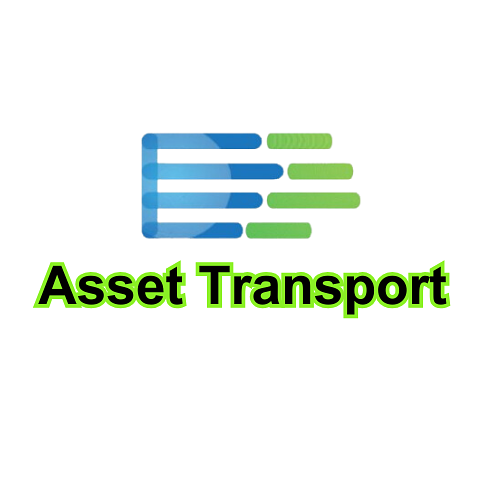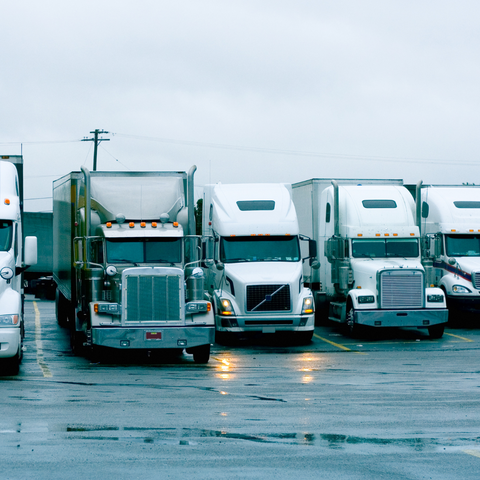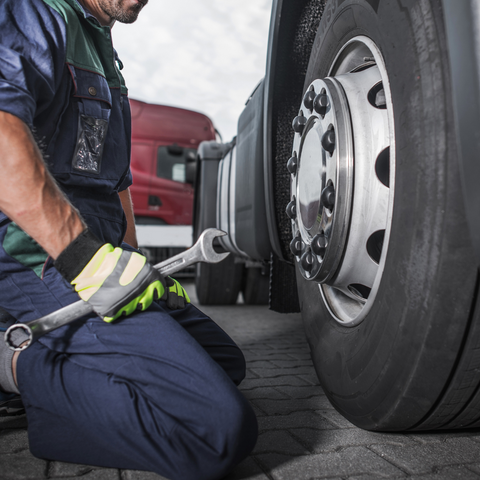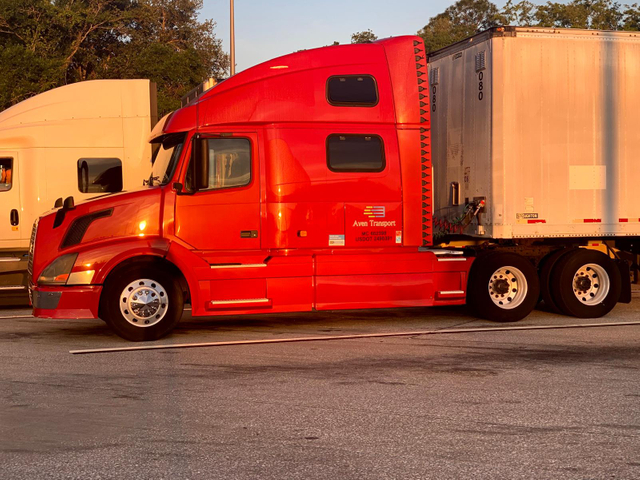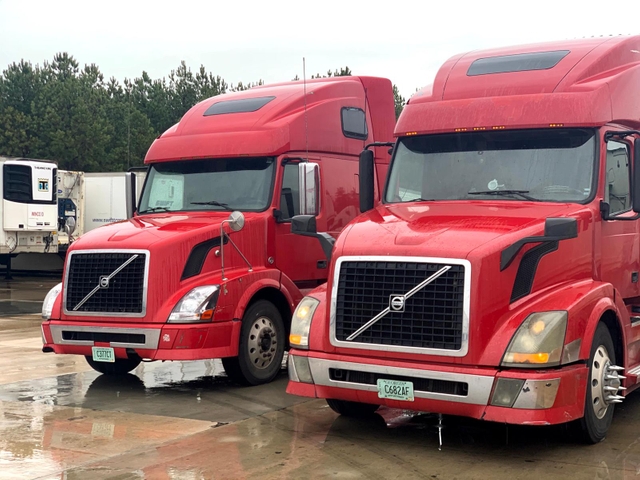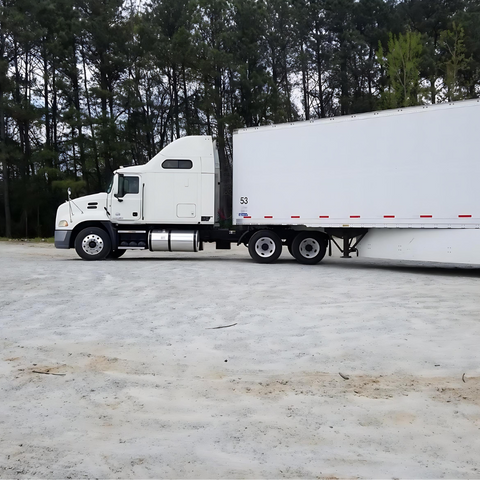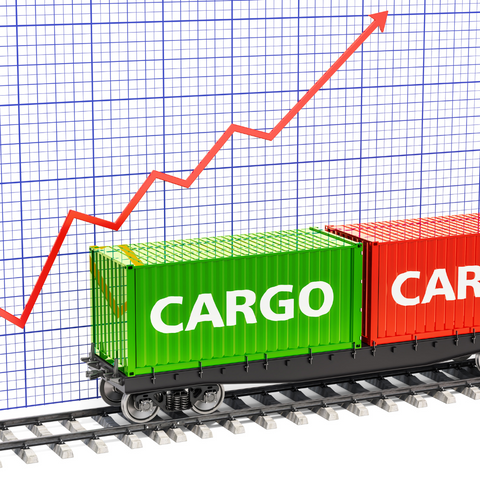Blog
Keep up to date with our news, tips & tricks, and latest information!
How to Prevent Cargo Fraud and Theft: A Guide for Shippers and Carriers
How to Prevent Cargo Fraud and Theft: A Guide for Shippers and Carriers
The freight shipping industry is a crucial pillar of the global economy, ensuring goods move efficiently from one place to another. However, while technological advancements have made logistics more streamlined, they have also created new vulnerabilities. Cargo theft, fraud, and cybercrime have become significant threats, with criminals leveraging sophisticated tactics to exploit gaps in security.
For businesses that rely on freight shipping, understanding and mitigating these risks is essential. Here’s a comprehensive guide to preventing cargo fraud and theft and securing your supply chain.
The Rising Threat of Cargo Theft and Fraud
Cargo theft and freight fraud have been on the rise, with organized crime networks using increasingly advanced techniques to steal goods. In 2023 alone, documented strategic cargo theft events increased by a staggering 430% year-over-year, affecting 89% of shippers across the industry. States like California and Texas have seen particularly high rates of theft, with Southern California being a major hotspot due to its ports and distribution centers.
Several factors contribute to the increasing prevalence of cargo crime:
more12 Freight Shipping Myths and Misconceptions: Unveiling the Truth
The freight shipping industry has rapidly evolved due to advancements in technology, automation, and the growing complexity of global trade. Despite these advancements, outdated practices and misinformation continue to persist, causing businesses to make costly mistakes. Many of these misconceptions originate from older shipping models that no longer reflect the realities of modern logistics.
Understanding the true dynamics of freight shipping is essential for businesses to control costs, ensure timely deliveries, comply with regulations, and mitigate risks. Below, we debunk 12 common myths surrounding freight shipping and provide insights to help businesses improve their operational efficiency and competitive advantage.
Myth #1: The Cheapest Quote Is Always the Best Deal
The Reality
While a low-cost quote may seem appealing, it does not necessarily equate to the best value or service quality. Many low-cost options include hidden fees like fuel surcharges, accessorial charges, or additional handling costs. Some budget carriers may cut corners, leading to poor communication, shipment delays, or damaged goods.
Long-term costs such as replacement fees, lost inventory, and dissatisfied customers can far outweigh the initial savings. Instead of simply choosing the lowest bid, businesses should consider service quality, reliability, and total cost of ownership.
more7 Key Benefits of Freight Consolidation
If your business involves shipping products, optimizing your logistics strategy can significantly impact your bottom line. One of the most effective ways to cut costs and enhance efficiency is through freight consolidation. This method not only saves money but also offers several advantages that can improve your overall shipping process.
In this guide, we’ll explore what freight consolidation is and seven compelling reasons why it might be the best choice for your business.
What is Freight Consolidation?
Freight consolidation is a shipping strategy where multiple smaller shipments, often from different suppliers, are combined into a single, larger shipment. These consolidated shipments are transported together, typically on the same truck, to a common destination. This process helps businesses reduce shipping expenses, improve efficiency, and minimize handling risks.
Unlike traditional Less-Than-Truckload (LTL) shipping, freight consolidation allows shippers to optimize available space, reducing the need for multiple, smaller shipments. The process typically involves collecting shipments at a consolidation center, organizing them efficiently, and then dispatching them to their final destination in bulk.
more12 Essential Winter Driving Tips for Truckers
Driving during the winter months can be daunting, especially for CDL A semi-truck drivers. With over 156,000 crashes and 1,300 fatalities annually linked to snowy and icy road conditions, prioritizing safety is non-negotiable. However, with the right preparation and mindset, winter driving can be less stressful and much safer. Here are 12 essential tips to help truck drivers navigate winter roads with confidence.
1. Conduct a Thorough Pre-Trip Inspection
A detailed pre-trip inspection is critical, particularly during winter. Before you hit the road, check:
● Lights, brakes, and tire conditions.
● Coolant and antifreeze levels.
● Windshield wipers and washer fluid.
● Tire pressure and chains (if required).
● That you have an ice scraper, gloves, and winter emergency gear.
Take a moment to familiarize yourself with your truck’s winter-specific equipment, such as inter-axle locks, heated mirrors, and environmental controls. These checks not only ensure safety but also prevent unexpected delays.
2. Stock a Winter Emergency Kit
Winter driving requires being prepared for unforeseen events. Always carry:
moreThe Future of Transport & Logistics: Top Trends to Watch in 2025
As we embrace 2025, the transport and logistics industry stand at the crossroads of revolutionary change. Advancements in technology, an increasing focus on sustainability, and shifting consumer demands are reshaping how goods are moved across the globe. The industry is not just about efficiency anymore—it’s about redefining cost structures, environmental impact, and operational resilience.
In this blog, we explore the top trends driving these transformations and how businesses can prepare to stay competitive in this ever-evolving landscape.
1. Sustainability Driving Industry TransformationGreen Logistics
Sustainability has become a cornerstone of modern logistics, with companies adopting eco-friendly practices to reduce their carbon footprints:
● Electric Vehicles (EVs): Transitioning to electric fleets is no longer optional but a necessity for reducing emissions.
● Alternative Fuels: Hydrogen, biofuels, and other renewable energy sources are rapidly gaining traction.
● Sustainable Packaging: The push for biodegradable and recyclable materials is stronger than ever, reducing plastic waste.
moreAvoiding Common Owner-Operator Mistakes: A Comprehensive Guide
Becoming an owner-operator is an empowering journey, granting you the independence to steer your own business. However, this new role comes with challenges, where mistakes can lead to significant financial setbacks. To succeed, you must balance financial management, regulatory compliance, safety practices, and adaptability in a competitive industry. With the right strategies and tools, you can turn potential pitfalls into opportunities for growth.
Build a Strong Foundation for Success
To build a thriving owner-operator business, planning is your first step to overcoming obstacles. These foundational practices will set you on the right path:
1. Obtain Proper Licenses and Permits
Start with essential certifications such as:
○ Motor Carrier Authority (MC Number) and USDOT Number
○ Unified Carrier Registration (UCR)
○ Heavy Vehicle Use Tax (HVUT)
○ International Registration Plan (IRP)
2. Failing to secure these credentials can lead to costly fines and delays in operations.
moreUnderstanding Long-Distance Truck Driver Salaries: A Comprehensive Guide
Long-distance trucking is a vital cornerstone of the logistics and transportation industry, offering career opportunities that promise financial stability and growth. However, life on the road comes with its challenges, particularly for drivers who spend weeks away from home. Despite the demanding lifestyle, many professionals pursue this career because of its lucrative pay. So, how much do long-distance truck drivers make? Let’s dive into the factors that influence earnings and how drivers can maximize their income.
How Much Do Long-Haul Truck Drivers Earn Annually?
The salaries of long-haul truck drivers vary significantly, depending on factors such as experience, employment type, location, and the nature of the freight. Below is an overview of earnings for different categories of drivers:
● W-2 Long-Haul Drivers (Company Employees)
○ Average annual salary: $71,196 (according to ZipRecruiter).
○ Entry-level drivers: As low as $23,500 per year.
○ Experienced drivers: Potential to earn over $100,000 annually.
● 1099 Drivers (Owner-Operators)
moreHow Often Do Truck Drivers Return Home?
How Often Do Truck Drivers Return Home?
Home: The Most Important Destination for a Truck Driver
A common misconception about truck driving is that drivers spend days or even weeks away from home at a time. However, with the right employer, this doesn’t have to be the case. At Asset Transport, we understand that every driver’s needs and preferences vary, and we offer a wide range of career paths with flexible schedules that allow for a balance between time on the road and time at home.
How Often Can Truck Drivers Expect to Go Home?
The frequency with which truck drivers return home is largely influenced by the type of driving routes they cover. For long-haul drivers who travel across state or national borders, home time may occur every few days, weeks, or even months. On the other hand, local drivers often return home daily, much like employees working a regular 9-to-5 schedule.
Days Off for Truck Drivers: What to Expect
The number of days off that truck drivers receive depends on several factors, including the company's policies, the driver’s experience, and federal regulations. The Federal Motor Carrier Safety Administration (FMCSA) enforces hours-of-service rules, ensuring drivers have mandatory rest periods. Many employers, including Asset Transport, also offer vacation time, typically ranging from one to two weeks per year, increasing with seniority. Drivers with more consistent routes, such as regional or dedicated runs, may enjoy weekends off or regular days off each week.
moreDressing for Success: Essential Clothing Tips for Truck Drivers
As a truck driver, your attire plays a significant role in ensuring comfort, safety, and professionalism on the road. With long hours behind the wheel and frequent stops in varying weather conditions, wearing the right clothes can make all the difference. From protective boots to moisture-wicking fabrics, dressing for success in the trucking industry is about balancing function, comfort, and safety.
Here’s a comprehensive guide to the best clothing options for truck drivers to keep you feeling your best during those long hauls:
1. Durable and Comfortable Pants
Truck drivers need pants that offer comfort, durability, and flexibility for movement during long drives. Here are some top choices:
● Stretchy Jeans: Opt for jeans with flexible materials like denim for long-lasting wear and comfort. Look for designs with extra pockets for tools and essentials. Brands like Wrangler offer great options with tapered legs to fit easily over work boots.
● Breathable Pants or Shorts: For hot weather, lightweight pants or shorts with moisture-wicking fabric are key to staying cool. Brands such as Red Kap provide durable yet breathable options with added flexibility for movement.
more12 Key Expenses for Owner-Operators: Managing Your Costs
Being an owner-operator provides flexibility and independence, along with the potential for substantial earnings. However, managing your business expenses is crucial for maximizing profitability. Here’s a detailed look at the 11 essential costs you should consider to ensure your trucking business thrives.
1. Truck Payments
The monthly payment for your truck, whether leased or purchased, is one of your largest fixed expenses. After paying off your truck, remember to budget for ongoing maintenance and repair costs to extend its lifespan.
2. Fuel Costs
Fuel is typically the most significant expense for owner-operators, averaging between $50,000 and $70,000 annually. To manage these costs, focus on optimizing your routes, controlling your speed, and using a fuel card to access discounts.
3. Maintenance and Repairs
Routine maintenance is necessary to prevent unexpected breakdowns and expenses, which usually account for around 10% of your overall costs. Establishing a preventative maintenance plan will help you manage these costs effectively.
4. Insurance
more8 Tips to Help You Pass Your CDL Test
Passing the commercial driver’s license (CDL) test is a critical milestone in becoming a professional truck driver. This exam requires preparation, focus, and a solid understanding of the material. Before taking the CDL test, you'll first need to obtain a commercial learner’s permit (CLP), which allows you to practice driving under supervision and must be held for at least 14 days before the exam. While the test may vary slightly by state, the principles of safe and efficient driving are universal. Below are eight essential tips to help you prepare and succeed in passing your CDL test.
1. Understand Your State’s CDL Requirements
Every state has specific requirements for obtaining a CDL. Before you dive into your study materials, take some time to review your state’s requirements, including any physical standards or age limits. Being aware of these prerequisites can help prevent any surprises during the application process. For example, some states require vision and medical exams, so make sure you're physically ready as well.
2. Study the CDL Manual for Your State
Your state’s CDL manual is your most important study tool. Each state has its own version, so make sure to download the correct one from your Department of Motor Vehicles (DMV) website or pick up a hard copy from a local DMV office. Don’t just skim through it—read it thoroughly. Start by getting an overall understanding, and then break down each section to focus on the topics covered in the exam. This will include everything from traffic laws and safety regulations to specific skills for different types of commercial vehicles.
moreStay Safe: Protect Yourself from Phishing and Smishing Scams in the Freight Industry
In today’s digital age, the freight industry has become a prime target for cybercriminals seeking to steal identities, payments, and even valuable cargo. With phishing and smishing scams on the rise, these attacks are not only wasting time but costing businesses millions in lost revenue. As fraudsters become more sophisticated, even the best security systems can struggle to keep up, leading to financial losses, data breaches, and operational disruptions.
Recognizing the growing threat, it's vital to understand how to identify these attacks and take preventive measures. Protecting your business starts with education—knowing how to spot phishing emails and smishing texts is key to avoiding the devastating consequences of cyberattacks.
What Are Phishing and Smishing Scams?
Phishing refers to fraudulent attempts by cybercriminals to steal sensitive information such as passwords, account numbers, or personal details. They often disguise these schemes as legitimate emails or websites. Once scammers gain access to your information, they can hack into your accounts, redirect payments, and leave you with a financial disaster.
Smishing, on the other hand, targets victims through deceptive text messages. These texts might appear to come from a trusted source and often create a sense of urgency, pushing the recipient to take immediate action, such as clicking on malicious links or sharing personal details.
moreEmotional Intelligence: A Critical Tool for Success in Trucking
Being a trucking business owner can be incredibly demanding. From securing well-paid loads, managing traffic, and dealing with limited parking, to avoiding double-brokered freight, there are countless stress factors—many beyond your control. So, how can trucking professionals effectively manage the emotions that come with running a business in this fast-paced industry? The key lies in developing emotional intelligence.
What is Emotional Intelligence?
At its core, emotional intelligence is the ability to combine logic and emotions to make informed decisions. It's not to be confused with emotional well-being, which is a temporary state. Psychologist David Caruso emphasized that emotional intelligence is not in conflict with traditional intelligence, nor is it a victory of emotion over reason. Instead, it represents a unique blend of the two.
Unlike emotional well-being, which fluctuates like physical health, emotional intelligence is a skill set you can develop. It includes competencies like empathy and the ability to pause, reflect, and assess situations from a long-term perspective, especially in the heat of running a trucking business.
moreWhy Should You Obtain Your TWIC?
In the ever-evolving landscape of the transportation industry, securing the right credentials is crucial for accessing new opportunities. One such credential, the Transportation Worker Identification Credential (TWIC), is particularly valuable for those working in maritime and port-related roles. In this blog, we'll explore why obtaining a TWIC can be a significant step toward a successful career in transportation.
What is a TWIC?
The Transportation Worker Identification Credential (TWIC) is a biometric identification card provided by the Transportation Security Administration (TSA). It is designed for individuals who need unescorted access to secure areas within maritime facilities, vessels, and ports across the United States. This credential features advanced security measures to ensure the identity of cardholders and enhance security within the maritime sector.
Key Benefits of Obtaining a TWIC
1. Unrestricted Access to Secure Areas
A primary advantage of holding a TWIC is gaining access to restricted zones within maritime facilities, ports, and vessels. These areas are crucial for the seamless operation of maritime activities, and having a TWIC allows you to perform your duties effectively and securely in these high-security regions, thereby boosting safety and operational efficiency.
moreTop Financial and Operational Tips for Owner-Operators
Embarking on a career as an owner-operator in the trucking industry requires significant operational and financial preparation. This process is essential to ensure smooth operations and long-term success. Key elements include creating a solid budget, preparing for start-up and ongoing costs, and understanding the role of good credit in securing loans. When deciding between purchasing new or used trucks, exploring various financing methods, and maintaining regular inspections, these decisions heavily impact an owner-operator's financial future. Additionally, obtaining the necessary insurance coverages—such as liability, cargo, and physical damage—and understanding the costs associated with registration and compliance with state and federal regulations are critical steps in avoiding legal complications.
In this guide, we’ll explore the key aspects of becoming a successful owner-operator, including financial planning, truck purchasing, insurance requirements, registration fees, and general advice to help you navigate the road ahead.
Financial Preparation
New owner-operators must recognize the importance of having substantial financial reserves to cover both ongoing and one-time expenses. These funds are crucial for covering costs such as fuel, regular maintenance, unexpected repairs, down payments, insurance premiums, permits, and licenses.
moreTire Inspections: How to Examine Tires and Prevent Problems
Recognizing a bald tire or understanding a tire pressure warning light is one thing, but conducting a thorough tire inspection requires more attention to detail.
Fleet managers have various reasons to perform regular tire inspections—complying with federal and state regulations, enhancing fuel efficiency, and prioritizing driver safety. Despite these efforts, faulty tires remain among the most common violations found by the Federal Motor Carrier Safety Administration. This inconsistency suggests that while many fleets inspect their tires, the inspections may not always be as thorough as needed.
To help fleets maintain optimal tire health, here’s what to focus on during tire inspections:
Key Areas to Examine During Tire Inspections
● Tire Pressure: Automakers provide recommended PSI (pounds per square inch) levels for tires to ensure maximum fuel efficiency, extended tire life, and smooth ride quality. Maintaining proper tire pressure is crucial, as both underinflation and overinflation can cause premature wear.
● Tread Depth Compliance: Federal law mandates tread depths of 4/32" for steering tires and 2/32" for non-steering tires. Regular checks ensure compliance with these standards and prevent accidents caused by insufficient tire traction.
moreThe Ins and Outs of Fleet Safety Certification: What You Need to Know
Fleet safety certification extends far beyond mere compliance—it’s about protecting lives, securing assets, and enhancing reputations. By prioritizing safety, companies not only elevate their standing in the industry but also build trust among clients and stakeholders. Implementing comprehensive fleet safety programs is the key to navigating the certification process smoothly, while fostering a culture of safety across operations.
Understanding Fleet Safety Certification
Fleet safety certification serves as a formal acknowledgment of an organization’s adherence to the highest safety standards. This recognition isn't just symbolic; it represents a commitment to safeguarding drivers, vehicles, and the broader community. Certified fleets enjoy numerous advantages, including enhanced business opportunities and reduced insurance premiums. Moreover, drivers in certified fleets benefit from safer working conditions where their well-being is prioritized.
Achieving fleet safety certification requires going beyond compliance—it demands a proactive safety management approach. Every aspect of fleet operations, from driver conduct to vehicle upkeep, must align with best practices, ensuring a safer environment for all involved.
moreHow Many Miles Do Truck Drivers Cover in a Year?
In the transportation industry, truck drivers are the backbone, ensuring goods are delivered efficiently across vast distances. If you're considering a career in truck driving or simply curious about the job, one important question is: how many miles does a truck driver typically cover in a year?
Understanding Trucking Hours Regulations
To grasp how many miles a truck driver covers annually, it's essential to understand the regulations governing their working hours. The Federal Motor Carrier Safety Administration (FMCSA) enforces Hours of Service (HOS) regulations to ensure drivers operate safely and get adequate rest.
What Are HOS Regulations?
The FMCSA’s HOS rules regulate the working hours of commercial truck drivers to prevent fatigue and promote road safety. Key HOS regulations include:
● 11-Hour Driving Limit: Drivers can drive up to 11 hours after 10 consecutive hours off duty.
● 14-Hour On-Duty Limit: Drivers cannot operate a vehicle past the 14th hour after coming on duty following a 10-hour off-duty period. This encompasses all driving and non-driving tasks.
more7 Steps to Becoming a Fleet Owner
Becoming a fleet owner can be a rewarding venture for owner-operators looking to expand their trucking business. Managing multiple trucks, hiring drivers, and overseeing day-to-day operations requires careful planning and investment. Here are seven essential steps to help you transition from owner-operator to fleet owner.
1. Assess the Costs of Fleet Ownership
As an owner-operator, you understand the expenses involved in running a single truck. However, managing a fleet introduces new financial challenges. Evaluate key factors such as:
● Driver salaries
● Monthly truck payments
● Parking or facility costs for your fleet
● Increased operating expenses (fuel, maintenance, insurance, etc.) By understanding these costs, you can better determine how much capital you’ll need to successfully launch and grow your fleet business.
2. Develop a Comprehensive Business Plan
Your fleet business plan should be more detailed than the one you created as an owner-operator. Key aspects to include are:
● Number of drivers needed
● Types of freight your fleet will haul
● Number of trucks and trailers required
moreIs a Career in Truck Driving the Right Path?
Is a Career in Truck Driving the Right Path?
In a world filled with a multitude of career options, truck driving stands out as a profession that uniquely combines adventure, independence, and a distinct set of challenges. Unlike traditional office-based jobs, truck driving offers a career path that is truly one-of-a-kind.
1. A Moving Workspace: While many jobs are tied to a stationary office, truck drivers work in an ever-changing environment—their cab becomes their mobile office. With constantly shifting landscapes, varied cities, and open highways, the workspace of a truck driver is dynamic and offers a stark contrast to the typical office setting.
2. Self-Reliance and Adaptability: A career in truck driving requires a high degree of self-reliance and adaptability. Unlike the predictable routines of office jobs, truck drivers face varying challenges, such as changing weather and road conditions. This demands quick thinking, problem-solving skills, and the ability to adjust to new situations—qualities that distinguish truck drivers from many other professionals.
3. Freedom of the Open Road: Truck drivers experience a level of freedom that is unparalleled in many other professions. Free from the confines of office walls, their workspace is the vast expanse of roads and highways. This liberty offers an exciting sense of adventure, enabling drivers to experience stunning landscapes and discover new areas.
moreEnhance the Sustainability of Your Fleet: 5 Practical Tips
Enhance the Sustainability of Your Fleet: 5 Practical Tips
Enhancing the sustainability of your fleet not only benefits the environment but also reduces your organization’s ecological impact. Here are five actionable strategies to create a more sustainable fleet:
Adopt Eco-Friendly Driving Habits: Encourage drivers to practice fuel-efficient driving techniques, such as smooth acceleration and braking, maintaining consistent speeds, and minimizing idling. These habits can lead to substantial reductions in fuel consumption and emissions, making your fleet more eco-friendly.
Leverage Telematics and Fleet Management Technology: Implementing telematics and fleet management systems can provide real-time insights into vehicle performance, driver behavior, and fuel usage. Use this data to pinpoint inefficiencies and apply data-driven strategies to boost fleet sustainability.
Commit to Regular Maintenance and Vehicle Upgrades: Consistent vehicle maintenance enhances fuel efficiency and extends the life of your fleet. Keep vehicles in top condition by regularly checking tire pressure, replacing air filters, and tuning engines. Consider transitioning older vehicles to newer, more fuel-efficient models as part of your sustainability strategy.
moreOwner operators should be ready for cell service cuts.
Owner operators should be ready for cell service cuts.
In the event of a network outage, owner-operators can benefit greatly from using an email app rather than a web-based email service. Email apps are designed to automatically download and store emails on your truck’s onboard device. This ensures that critical information regarding deliveries, routes, or schedules remains accessible even when you’re offline. This feature is crucial for truck drivers who need to stay updated with timely communications. Unlike web-based email, which requires an internet connection, email apps will notify you of new messages as soon as connectivity is restored, helping you avoid missing any important updates.
Additionally, it’s advisable to save your frequently used maps for offline access in your preferred navigation app. Here’s how you can prepare:
Google Maps:
1. Open Google Maps: Ensure you are connected to the internet and logged into your Google account.
2. Search for the Area: Enter the location you wish to download in the search bar.
3. Select the Area: Tap on the location’s name at the bottom to view its details.
moreDebunking Fleet Management Myths and Misconceptions
Debunking Fleet Management Myths and Misconceptions
Fleet management plays a crucial role in many businesses, especially those reliant on transportation and logistics. Despite its significance, several myths and misconceptions about fleet management can lead to misunderstandings and inefficiencies.
Myth 1: Fleet Management is Limited to Vehicle Tracking A common misunderstanding is that fleet management is merely about monitoring vehicle locations. While GPS tracking is an essential component, effective fleet management involves much more. It involves overseeing vehicle upkeep, driver performance, fuel economy, adherence to regulations, and route optimization. Modern fleet management systems leverage integrated tools and data to enhance efficiency and reduce expenses.
Myth 2: Fleet Management Implementation Is Overly Complex The complexity of deploying a fleet management system can discourage businesses. While integrating new technology might seem daunting, many modern systems are designed to be user-friendly and easy to implement. Providers usually offer extensive training and support to ensure a smooth transition. The benefits of enhanced fleet operations and cost savings make the effort worthwhile.
moreUnderstanding the Role of an Owner-Operator
Understanding the Role of an Owner-Operator
Choosing to become an owner-operator in the trucking industry is a major decision that combines the appeal of independence with the challenges of business management. Unlike company drivers, owner-operators own and manage their trucks, giving them control over routes, schedules, and operational aspects. This freedom comes with distinct responsibilities and benefits.
In this article, we'll explore the workings of owner-operators, outlining their daily tasks, the qualifications needed, the types of trucks and freight they handle, the associated costs, and their earning potential.
What is an Owner-Operator?
An owner-operator is a self-employed driver who owns and operates their own truck. They are responsible for every facet of their business, including truck maintenance, contract acquisition, and financial management. This level of control provides flexibility but requires a strong commitment and business acumen.
Key Responsibilities
1. Truck Purchase and Maintenance Owner-operators are tasked with buying and maintaining their trucks. This includes regular upkeep, repairs, and upgrades to ensure compliance with safety and environmental standards.
moreExploring Dry Van Shipping: The Essentials of Enclosed Truck Trailers
Exploring Dry Van Shipping: The Essentials of Enclosed Truck Trailers
Dry vans are essential in freight shipping, and their long, rectangular shapes are a common sight on highways. Often adorned with company logos, these vehicles transport goods across the nation.
Playing a crucial role in the economy, dry vans represent 2.05 million trucks on the road. They carry a wide range of commodities, from household items to food and furniture, moving these goods from production facilities to retail spaces.
These trucks are often the preferred method in the freight transportation industry. Let's explore why.
WHAT IS A DRY VAN?
A dry van, also known as a box trailer, is the most common type of enclosed trailer used for shipping goods across the country. As the name suggests, dry van shipping involves transporting "dry" goods, meaning they remain protected from the outside environment during shipment.
TYPES OF DRY VANS
The standard dry van is a 53-foot trailer, typically with an inside width of 96 inches and an inside height of about 110 inches, ideal for shipping larger items and bulk quantities.
moreTop 8 Health Apps for Owner Operators: Keep Your Health on Track!
Top 8 Health Apps for Owner Operators: Keep Your Health on Track!
As an Owner Operator at Asset Transport, maintaining your health is essential not only for complying with FMCSA medical regulations but also for your overall well-being. It's important to keep your mind sharp, your body active, and your mood positive. That’s why we’ve curated a list of the top 8 health apps specifically for Owner Operators. These apps are designed to help you manage your health while on the road. Ready to begin? Let's explore these health tips for Owner Operators!
1. Lumosity Train Your Brain, Have Some Fun! Lumosity turns brain-training into enjoyable games that enhance memory and attention. Developed by scientists, this app offers personalized training programs to challenge and sharpen your mind. It’s like a gym for your brain!
2. Calm Find Your Inner Peace! Whether you have a minute or an hour, Calm helps you practice mindfulness with soothing music and guided meditations. Perfect for reducing stress and enhancing relaxation during your breaks. A must during inspections!
3. Fooducate Make Smarter Food Choices! Confused by food labels? Fooducate lets you scan barcodes or search for foods to see their nutritional value. It even scores foods for healthiness, helping you make better dietary choices effortlessly.
moreIs Becoming an Owner Operator a Smart Choice?
Is Becoming an Owner Operator a Smart Choice?
If you're considering a career in trucking, transitioning to an owner operator role is a major decision that comes with both exciting opportunities and notable challenges. While the prospect of autonomy, increased earning potential, and the freedom to manage your own business is enticing, it's crucial to fully understand what this career path involves. Let’s dive into the benefits and drawbacks of being an owner operator to help you determine if it's the right move for you.
What is an Owner Operator?
An owner-operator is a self-employed truck driver who both owns and manages their own truck. Unlike company drivers, owner operators have complete control over their business decisions, including route selection, client management, and financial planning.
Benefits of Being an Owner Operator
1. Autonomy and Flexibility
○ Enjoy the freedom to make all business decisions, from contract choices to route planning. This control allows you to customize your work to match your personal preferences and operational style. Flexibility in your schedule means you can work when and where you want, accommodating your personal commitments.
moreConestoga Trucks and Trailers: Revolutionizing Safe Transportation
Conestoga Trucks and Trailers: Revolutionizing Safe Transportation
When it comes to transporting goods over long distances, the versatility and practicality of Conestoga trailers stand out. As you explore shipping solutions, you may encounter the term “Conestoga.” Originating from the Conestoga wagons used by pioneers in the 18th and 19th centuries, the modern Conestoga trailer is a powerful tool for today’s truck drivers. Offering protection from the elements and flexibility in size, Conestoga trailers provide compelling benefits in the trucking industry.
What Exactly Is a Conestoga Trailer and How Does It Operate?
A Conestoga trailer is essentially a flatbed with a flexible, rolling tarp system that covers the cargo, ensuring a secure and adaptable environment for freight. The retractable tarp system mimics the effects of a standard van trailer while offering the versatility and accessibility of a flatbed trailer. This system allows for quick and convenient loading and unloading from the sides, back, or top of the trailer.
Unlike typical flatbed trailers that require manual labor to secure tarps after loading, a Conestoga trailer features a sliding tarp system. This tarp is connected to two parallel rails that run the length of the trailer. Sliding these tarps forward or backward creates a safe, lift-free loading environment. Securing the tarp is as simple as drawing it along these rails to cover the load. This design is ideal for protecting sensitive loads from weather conditions and road debris and handling various freight, from palletized goods to heavy machinery.
moreImproving Freight Transportation with Strategic Freight Brokerage
Improving Freight Transportation with Strategic Freight Brokerage
Freight transportation services are vital to both domestic and international economies, offering essential support to consumers and businesses alike.
While many top S&P 500 companies have recognized the importance of freight transportation in their operations, numerous others have only recently realized its significance due to the pandemic.
Logistics professionals have multiple options to optimize capacity, pricing, and service, leading us to the role of freight brokers.
In this blog post, we'll explore the role of freight brokers, addressing:
● The range of services they offer.
● How they efficiently manage freight capacity.
● The differences between freight brokers and managed freight services / freight 3PLs.
● Recommended processes for selecting the right freight transportation service.
● Insights into technology benefits for shippers.
● The market intelligence brokers can provide.
Let's dive into the details.
Introduction to Freight Brokers
A freight broker acts as an intermediary between shippers and carriers, facilitating the movement of goods from origin to destination. Their duties include receiving orders from shippers, assigning loads to carriers, tracking deliveries, and resolving any issues that arise. After delivery, the broker collects proof of delivery (POD) and processes payments for both the carrier and the shipper.
more11 Strategies for Negotiating Better Freight Rates
11 Strategies for Negotiating Better Freight Rates
Freight rates are influenced by various factors including market conditions, fuel prices, cargo weight, and travel distances. Owner-operators looking to negotiate better rates can leverage several strategies to enhance their profitability:
1. Conduct Market Research
Keep a close eye on market trends and industry benchmarks to ensure your rates remain competitive. Staying updated on industry changes and tracking your competitors’ rates will help you maintain an advantageous position.
2. Track Cost-Per-Mile
Monitoring your cost-per-mile is crucial. By calculating your total expenses, including fuel, insurance, maintenance, permits, and overhead, you can make informed decisions and use this data to negotiate better rates.
3. Build Strong Relationships
Develop positive relationships with freight providers by demonstrating reliability and consistency. Share your performance metrics and actively seek feedback to strengthen these partnerships and negotiate favorable terms.
moreHow Do Truck Drivers Stay Awake? Essential Tips for Alertness
How Do Truck Drivers Stay Awake? Essential Tips for Alertness
The trucking industry plays a crucial role in global transportation and trade. Truck drivers are tasked with delivering goods across long distances, which demands not only the skill to handle large vehicles but also substantial endurance and alertness. Managing fatigue during extended hours on the road is a significant challenge for many drivers. This guide offers practical strategies to help truck drivers stay awake and manage fatigue effectively.
Why Staying Awake is Critical for Truck Drivers
Maintaining alertness while driving is vital for truck drivers for several reasons:
● Safety: Staying awake ensures the safety of both the driver and other road users. Fatigue impairs cognitive and motor skills, leading to poor decision-making and slower reaction times.
● Risk Management: Driving long hours without adequate breaks increases the risk of accidents. Fatigue can be as dangerous as driving under the influence of alcohol.
● Timely Deliveries: The trucking industry relies on timely deliveries. Alert drivers are essential for meeting deadlines and avoiding errors.
moreEssential Tools for Truck Driver Repair and Maintenance
Essential Tools for Truck Driver Repair and Maintenance
Every truck driver should be equipped with a comprehensive set of tools for handling unexpected roadside repairs. A well-stocked toolbox can prevent lengthy delays and ensure that you stay on course toward your destination. Here's a look at the crucial tools every truck driver should carry:
Main Roadside Tool Kit
A high-quality roadside tool kit is essential for addressing any issues that arise on the road. These kits typically come in various sizes and include over 100 tools, such as Metric and SAE socket sets and wrenches. A reliable, all-in-one toolkit should contain a diverse selection of commonly used hand and power sockets, making automotive repairs more manageable. The compact design ensures easy storage in your truck.
Jumper Cables and Kit
Having a jumper kit and cables is crucial for restarting your truck when the battery fails. This kit can save you the hassle of waiting for roadside assistance and allows you to help other drivers in need.
Recovery and Ratchet Straps
moreGet Your CDL: A Step-by-Step Guide to Becoming a Professional Truck Driver
Get Your CDL: A Step-by-Step Guide to Becoming a Professional Truck Driver
If you're exploring a career as a truck driver, you likely understand the growing demand for skilled drivers. To embark on this professional journey, obtaining a Class A Commercial Driver’s License (CDL) through a federally-certified training program is essential.
Here’s a simplified guide to assist you through the process:
Step One: Enroll in a CDL Training Program Begin by applying to a CDL training program before securing your commercial learner’s permit (CLP). Many top programs have waiting lists, so contacting a recruiter early is a smart move.
Step Two: Prepare for Your CLP Exam Focus on studying your state's CDL manual to prepare for the commercial learner’s permit test. This manual provides essential information specific to your state’s requirements.
Step Three: Take a Free CDL Practice Test Use a free CDL practice test to gauge your readiness. While not exhaustive, this test covers many crucial questions you might encounter.
Step Four: Complete Your Permit Test Take your CLP test at an approved location in your home state. For more details on testing locations and CDL regulations, visit our Commercial Learner’s Permits page.
more